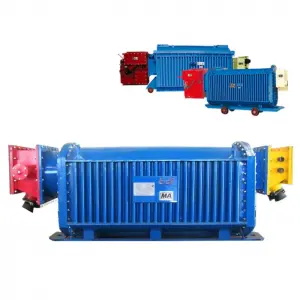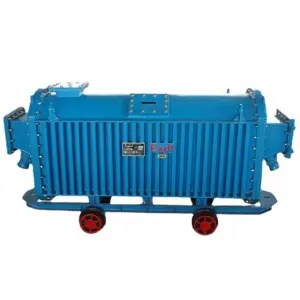Mining substations are an important part of the energy infrastructure of mining operations. Also known as power centers or switchgear, these substations are designed to provide power to the heavy machinery, equipment and lighting systems within the mine. They are specifically designed to withstand the harsh conditions found in mining environments, including dust, vibration and extreme temperatures.Product Description A mining substation is a compact, self-contained unit that typically contains transformers, switchgear and controlgear. Transformers step down the high voltage of the power supply to a lower voltage that can then be used to power devices, while switching devices control the power distributed to each load.
Control devices enable operators to remotely monitor and control substations from a control room or other location. One of the main features of mining substations is their robust construction. They are designed to withstand the extreme conditions and stresses found in mining environments, such as constant vibration, thermal shock and heavy dust. They are also constructed to minimize the risk of fire or explosion, which are major hazards in mining operations.usage Mining substations are often used to power heavy equipment such as forklifts, loaders and haul trucks. They can also be used to power other systems and machines such as conveyor belts, crushers and pumps. Mining substations provide reliable power to all critical systems, helping to reduce downtime and increase the productivity of mining operations. Another benefit of mining substations is their portability. They can be easily moved and installed in different locations within the mine, allowing greater flexibility and adaptability as mining operations grow and expand.
This is especially useful in underground mining operations, where the location and layout of equipment may need to be adjusted as mining progresses.environmental benefits Mining substations can also provide environmental benefits by reducing the amount of greenhouse gas emissions produced by mining operations. By providing reliable electricity, they can help minimize the use of diesel generators, which are often used as backup power for mining operations. Diesel generators are a major source of emissions, releasing harmful pollutants into the air, soil and water. Additionally, mining substations help increase the efficiency of mining operations and reduce energy waste. This helps reduce the overall carbon footprint of the mining operation, making it more sustainable and environmentally friendly. In conclusion, mining substations are an important part of the energy infrastructure of mining operations. They provide reliable power to critical systems, increase productivity and efficiency, and reduce the environmental impact of mining operations. As the mining business continues to grow and expand, mining substations will remain an important tool for the mining industry.


Post time: May-25-2023
